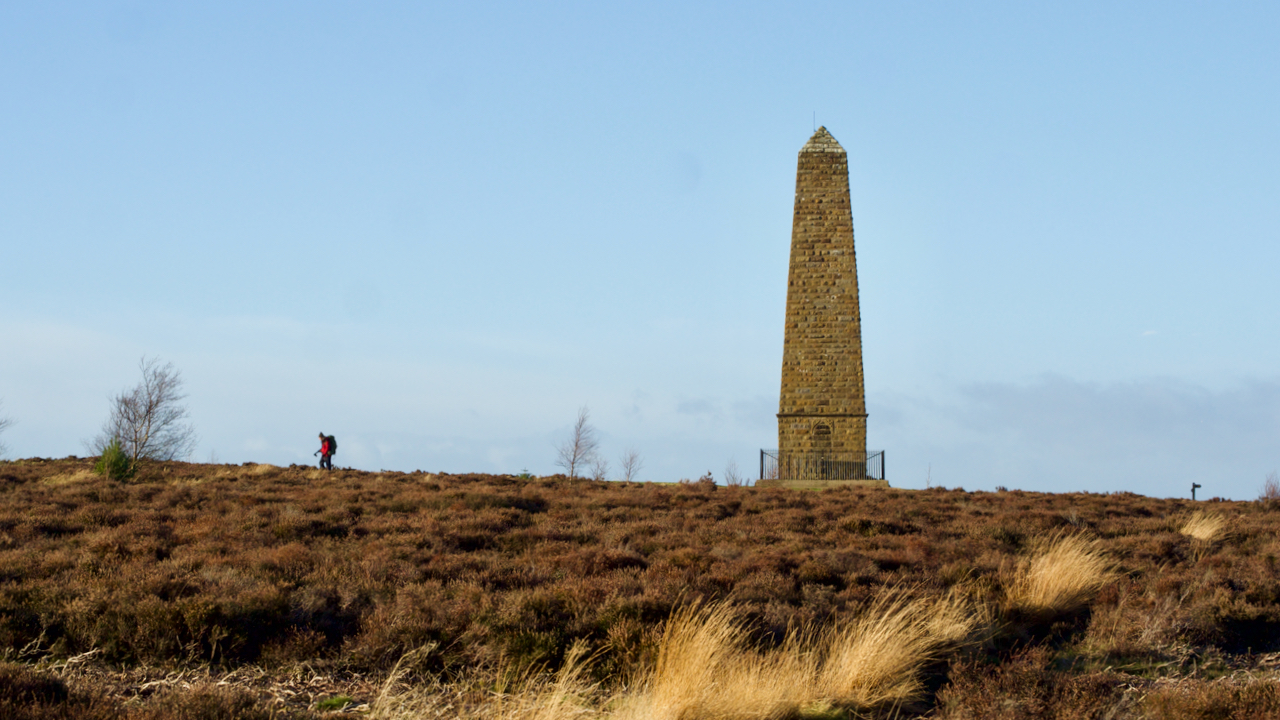The well-known monument to Capt. James Cook was erected in 1827. The design of an obelisk has led some to speculate a masonic connection1George Markham Tweddell. 2012. ‘Captain Cook’s Monument, Easby Moor. The Mystery behind It!’, Blogspot.com <https://georgemarkhamtweddell.blogspot.com/2012/11/captain-cooks-monument-easby-moor.html> [accessed 21 December 2022].
But the more probable reasoning was that obelisks were simply in vogue. In that year, Dublin had begun its erection of the Wellington Monument in Phoenix Park to commemorate victories by the victories of the Duke of Wellington2‘File:Ireland – Dublin – Phoenix Park – Wellington Monument 2.Jpg – Wikimedia Commons’. 2006. Wikimedia.org <https://commons.wikimedia.org/wiki/File:Ireland_-_Dublin_-_Phoenix_Park_-_Wellington_Monument_2.jpg> [accessed 21 December 2022].
And how to take advantage of Muhammad Ali Pasha’s gift to Britain, eight years earlier of one of Cleopatra’s Needles, was still in the public discourse. There was no concensus about where to put it let alone how to transport it to Britain.
The obelisk of solid granite lay prone in a beach near Alexandria where it had been left by the Romans two thousand years before3Mariner’s Mirror Podcast. 2022. ‘Freak Ships of the Nineteenth Century: The Cleopatra’, YouTube <https://www.youtube.com/watch?v=MW-6afW1nbk> [accessed 21 December 2022].
The story of Cleopatra’s Needle’s journey from Alexandria to the London Embankment is a story of Victorian ingenuity involving a North East connection.
It would be another fifty years before a Newcastle engineer, John Dixon, aided by his brother Waynman, proposed a method of transporting the 224-ton, 21-metre obelisk. He would build a cigar-shaped ship, prefabricated in London, encasing the column, which would then be rolled down the beach into the sea. The cigar-ship, aptly named Cleopatra, would then be towed to London. YouTube has a super little animation available:
The journey was not without incident. Crossing the Bay of Biscay, the tow line broke, the Cleopatra was thought lost, and six sailors from the tow vessel lost their lives.
But the Cleopatra was eventually spotted, a new tow-line fitted and the journey continued to London where John Dixon erected the obelisk on the Embankment where it stands today4Pearce, Ian. “John Dixon — The Man Who Could Have Built the Forth Bridge”. Page 65. 2018. Tyne Bridge Publishing..
John Dixon (1835-1891) was the eldest of three brothers all born in Newcastle and the owner of an international civil engineering business. Raylton Dixon (1838-1901) was the owner of Cleveland Dockyard on the Tees and became Mayor of Middlesbrough. After the stress of the Cleopatra incident and the loss of life, Waynman (1844-1930), the youngest brother, left John and joined Raylton on Teesside5Ibid. Page 3..
- 1George Markham Tweddell. 2012. ‘Captain Cook’s Monument, Easby Moor. The Mystery behind It!’, Blogspot.com <https://georgemarkhamtweddell.blogspot.com/2012/11/captain-cooks-monument-easby-moor.html> [accessed 21 December 2022]
- 2‘File:Ireland – Dublin – Phoenix Park – Wellington Monument 2.Jpg – Wikimedia Commons’. 2006. Wikimedia.org <https://commons.wikimedia.org/wiki/File:Ireland_-_Dublin_-_Phoenix_Park_-_Wellington_Monument_2.jpg> [accessed 21 December 2022]
- 3Mariner’s Mirror Podcast. 2022. ‘Freak Ships of the Nineteenth Century: The Cleopatra’, YouTube <https://www.youtube.com/watch?v=MW-6afW1nbk> [accessed 21 December 2022]
- 4Pearce, Ian. “John Dixon — The Man Who Could Have Built the Forth Bridge”. Page 65. 2018. Tyne Bridge Publishing.
- 5Ibid. Page 3.

Leave a Reply